Museum of London
Collections
The Museum’s collections are its outstanding resource. The whole collection was designated as nationally important in 1997. It is unrivalled among city museums internationally for its scope and size.
The collections are constantly changing. The Museum regularly adds new material, including finds from archaeological digs. The overall aim is to build up a unique resource about London and Londoners for future generations to study and enjoy.
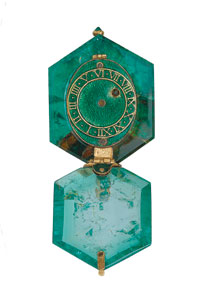
Prehistoric to 1700
Our early collections are the responsibility of the Department of Early London History, which covers the period from the first human occupation of the Lower Thames Valley in about 500,000 BC right up to AD 1700.
The collections are divided into four key periods: prehistoric (500,000 BC – AD 43), Roman (AD 43 - 410), Saxon & medieval (AD 410 - 1485), and Tudor & Stuart (AD 1485 - 1700). The Department also contains the London Archaeological Archive and Research Centre (LAARC).
The LAARC includes the Centre for Human Bioarchaeology that cares for our collection of human remains. Please use the headings on the left to view details of these collections. If you wish to find out more, click on Access and Enquiries.

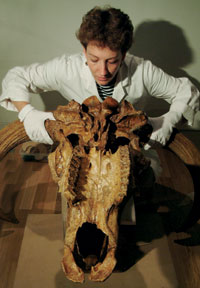
Prehistoric
The Museum's prehistoric collections may be divided into three categories: Firstly there are single artefacts of pottery, bone and stone that were recovered during dredging operations in the Thames in the 19th and early 20th centuries.
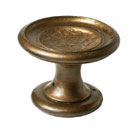
Secondly there are Palaeolithic implements recovered during gravel extraction in west London or during building operations in other areas.
Thirdly there are collections of pottery, bone and stone recovered on land either during building operations or by surface collection in less densely developed areas such as Ham Fields or Wimbledon Common
The most important element of the prehistoric material is the collection of some 900 pieces of Bronze Age and Iron Age metalwork, mostly recovered from the Thames. It is one of the largest such collections in the country and has been extensively discussed and published both nationally and internationally.
The major holding within this group is derived from Thomas Layton and includes two unparalleled items from Brentford, a copper alloy chariot fitting or 'horn cap' which is a superb example of the Celtic art style, and a wooden stave-built tankard sheathed in bronze.
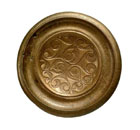
The largest category of prehistoric material (comprising some two thirds of the total collection of c.11,000 artefacts) consists of flint and stone implements. Within this, the largest group is the Lower Palaeolithic material, principally handaxes recovered during gravel extraction and building operations.
The Garraway Rice collection, donated in 1937, comprises material from the Yiewsley area in west London, and has been published. For the Middle Palaeolithic, the Yiewsley material again provides limited but crucial evidence, as does material from sites in the Acton area such as Creffield Road.
The Upper Palaeolithic is not well represented, though recent excavations have begun to redress the balance. Mesolithic axes and picks are numerous, and have even given their name to a type, the 'Thames pick', so-called because of the numbers recovered during river dredging.
The collection of Neolithic axes is one of the largest in Britain and, like the metalwork, seems to represent primarily votive offerings deposited into the river. Many of the axes made of stone other than flint have undergone thin section analysis as part of a programme by the Implement Petrology Research Group.
The collections of prehistoric bone, antler and horn, of pottery and of coins, are relatively small and less significant that the other categories, although some of the antler material, particularly the mace heads and mattocks, have recently been subject to a radiocarbon dating programme, which has divided them into Mesolithic and Bronze Age dates.

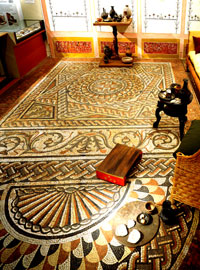
Roman
The Roman collection comprises some 47,000 objects, the great majority of which were recovered during building operations in the City of London, Southwark and nearby areas in the last century and the first part of this century.
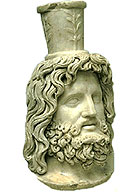
Ceramics
Around two thirds of this collection comprises what is probably the largest collection of samian ware in the country. Of the other ceramic material, a large proportion consists of complete vessels or large fragments, probably indicating that they were derived from burial deposits. They are thus different in character from the sherds that are recovered from most City occupation sites, and complement excavated assemblages by indicating the complete forms of vessels.
Marble and metalwork
Perhaps the best known groups of Roman material are the marble sculptures from the Temple of Mithras, and the metalwork derived from the bed of the Walbrook stream. The superbly preserved nature of the metal collection and the wide-ranging selection of domestic, industrial and religious artefacts make this perhaps the best collection in Britain. The metalwork collection as a whole, ranging from iron hipposandals to knives, spoons, jewellery, tools and toilet implements, provides an unsurpassed collection of everyday items that are invaluable for displays as well as for more specialised research.

Coins, glass, wood leather and bone
Other elements of the Roman collection include coins, glass, wood, leather and bone. The coin collection provides useful comparanda, but is of lesser scholarly importance than the excavated archaeological coins which are from secure contexts. The same applies for the glass collections, which alongside the excavated material forms a highly significant corpus.
The leather collections, comprising some 1500 pieces, are a valuable resource for the study of Roman leather-working techniques, particularly shoe manufacture. The most famous pieces are fragments of four 'bikinis' which are unparalleled in Britain. The wood collection includes a ladder, a complete barrel and writing tablets which are displayed, and complement the more recently excavated wooden material.

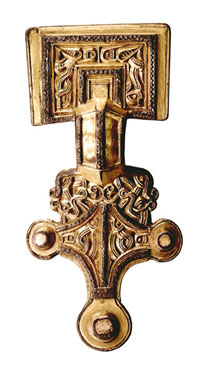
Saxon and Medieval
The Museum's relatively small collections of the Saxon period (c.700 objects) reflect the low density and ephemerally of Saxon settlement as a whole. The medieval collections (c.12,000 items) are one of the most celebrated elements of the Museum of London's overall holdings because of their breadth, depth and quality. Saxon collection
Important assemblages include some of the material from the cemeteries at Mitcham, Hanwell and Ewell and the small but historically important group from the Savoy Palace site, which was one of the first indications of possible Saxon settlement to the west of the Roman city.
Of the single finds, as with the prehistoric collections, significant numbers are derived from the Thames, such as the group of Anglo-Saxon weapons from the Brentford area in the Layton collection. The Saxon collections as a whole are strong in weapons, such as 'Viking' battleaxes, spearheads and scramasaxes, but relatively weak on domestic items.
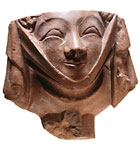
Medieval collection
The medieval collections (c.12,000 items) are one of the most celebrated elements of the Museum of London's overall holdings because of their breadth, depth and quality. They are strongest in ordinary domestic objects, and provide a cross-section of the things in everyday use in medieval England.
An example of the collections' nature is our holding of arms and armour. This is chiefly not high quality knightly weaponry, such as is to be found in the Royal Armouries and similar collections; the collection is instead unique in the number and variety of everyday civilian weapons (chiefly daggers) it contains.
Over the last 30 years major additions have been made to the medieval collections, particularly of small metalwork, from the activities of Thames 'mudlarks' (licensed metal-detectorists searching the Thames foreshore). These supplement an already outstanding collection of items such as dress accessories: buckles, brooches, belt-fittings etc.
Recent finds, mostly by mudlarks, of more than 600 pewter pilgrim badges and souvenirs and small secular badges, have been added to a collection already totalling about 250 in 1975. A further 500 or so of these are included in the Archaeological Archive.
The collection of medieval ceramics is particularly outstanding. It contains complete examples collected in London by antiquarians. These demonstrate the forms and decoration of less complete but securely provenanced material held in the Archaeological Archive. The collection of medieval floor tiles is also extensive.

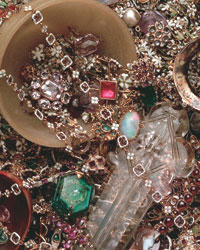
Tudor and Stuart
The Museum of London's 16th- and 17th-century collections occupy a central place in any analysis of post-medieval material culture, and in particular to the study of London's social history in this period.
The great diversity and depth of the Tudor and Stuart collections, representing most aspects of the changing structure of urban society during the 16th and 17th century, reflects the complexity of this historical period, and London's unique position within it.
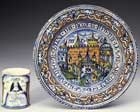
Cutlery and base metal artefacts
One of the major strengths of the collection is the base metal artefacts. The cutlery collection is notable, containing over 1500 pieces. Although the majority have been recovered from the Thames foreshore, a significant number were purchased by the London Museum from the private collection of Mr Hilton Price.
The Cheapside Hoard is the greatest hoard of Elizabethan and Jacobean jewellery in the world.
Dress accessories and toys
Of similar national importance is the collection of base metal dress accessories and toys. The Museum's pewter collection is unparalleled for provenanced pieces with specific local associations, and its significance was underlined by an exhibition and publication in 1989-90.
Edged weaponry
The collection of edged weapons compares favourably with those of the Royal Armouries and the Wallace Collection. The group of swords from the Hounslow Sword Factory manufactured during the early 17th century are particularly significant, and a major joint publication on the daggers is in preparation jointly with the Royal Armouries.
Watches
The watch collection ranks highly on the list of early watch collections in the country and has recently been the subject of a research project. Of the jewellery, the Cheapside hoard stands out and has been subject to several studies.
Coins
The collections of coins and coin-like objects are extensive, but not as comprehensive as those of the national museums. The collection of trade tokens presented by Beaufoy in 1850 are a largely untapped resource despite a published catalogue.
Ceramics
It is in the area of ceramics that the post-medieval collection is internationally important. The range and completeness of the vessels, together with the complementary material in the Archaeological Archive, make this collection of interest to scholars in the UK and in parts of the world where these ceramics were exported, such as the rest of Europe, North America and the Caribbean.
Glass
The glass collections are also extensive. Some of the pieces in the Garton Collection of English table glass given in 1943 are of 17th-century date, including the Chesterfield flute.
Bone, antler, ivory , horn and leather
Amongst the collections of organic materials, the assemblages of bone, antler, ivory and horn, and of leather, stand out particularly. The former group consists of nearly 1000 objects.

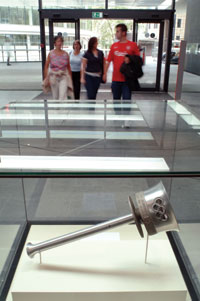
1700 to today
The Museum’s collections of more recent material are the responsibility of the Department of Later London History. The collections currently comprise almost half a million objects, images and digital recordings. The size is growing every year as we add new material about London today.
Our collections are organised by object type for practical reasons and because staff can develop expertise in specialist areas. However collecting frequently cuts across these traditional divisions, particularly for new media. Our collections currently include web sites, poems, digital images and soundscapes.
We have two current collecting themes: London’s diversity and the impact of the 2012 Olympic Games.

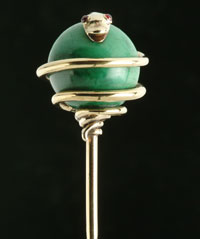
Decorative arts
The decorative arts collection has particularly good holdings of 18th-century material reflecting the important role of London in manufacturing and retailing luxury goods at this period
It includes ceramics, glass, silver, jewellery, enamels, watches and objects of vertu.
The Garton Collection of glass which dates from the late 17th to the early 19th century consists of 437 pieces. The ceramics include porcelain made by Chelsea, Bow and Vauxhall, the Macalaster collection of tea bowls and tea cups and London-made stoneware.
The fine jewellery collection includes groups assembled by such notable collectors as Dame Joan Evans, Baroness D'Erlanger, Lady Cory and Queen Mary. It is particularly rich in sentimental and mourning jewels and good quality costume jewellery including a large collection of chatelaines.
Silver dating from the 18th and 19th centuries includes interesting collections of bottle labels, caddy spoons and novelty pepper pots. Other 19th- and 20th-century material includes an important collection from the Whitefriars Glassworks which was particularly noted for its Arts and Crafts glass, ceramics made by the Martin Brothers, commemorative ceramics and a large collection of stoneware.

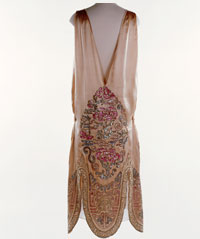
Dress and fashion
The dress collection at the Museum of London is internationally recognised for its quality and diversity.
From the outset the London Museum collected fashion and clothing as a social record according it the same historical significance as other artefacts of material culture. Provenance and context were valued and the museum was the first in Britain to publish a catalogue of its costume collection in 1933. Clothing and textiles are displayed in themed displays in the Museum’s galleries.
The aims of the dress collection are to
- represent London’s role as a centre for the fashion and clothing industry, from education through to design, production, promotion, retail and wear
- reflect the diversity of life in London, recording and collecting the clothing of all London’s communities
There are over 24,000 objects in the collection, dating from the Tudor period to the present day. The core of the collection consists of fashionable dress and accessories. The 20th century garments are more diverse and include clothing from a wider range of socio-economic, ethnic and cultural groups.
Key groups of material include:
- clothing by London-based designers including Norman Hartnell, Mary Quant and Vivienne Westwood
- material made by London manufacturers, tailors and dressmakers
- fashion and clothing sold in London department stores, chain stores, boutiques and other retail outlets
- sportswear and clothing related to hobbies and London societies
- occupational clothing including household livery, civil and ceremonial uniforms. The Church, the Law, the City and the Court are all represented
- royal clothing: garments worn by members of the royal family from the time of Charles I to the mid-20th century
- costume and accessories associated with the theatre and performing arts from the late 18th century to 1970. This includes material related to the theatre, music hall, opera, ballet, circus, cabaret and television
- fancy dress
- textiles manufactured in London, such as silks woven in Spitalfields and printed textiles
- suffrage and other banners
- dolls dating from the late 17th to the late 20th century
- The Harry Matthews Collection of costume and fashion plates consisting of almost 4,000 prints dating from the 16th century to 1829
The costume collection is complemented by holdings of related material in the social and working history, photograph and printed ephemera collections and the library.

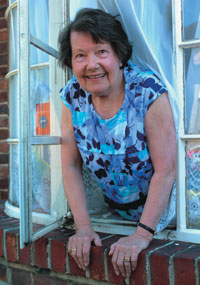
Life stories and oral history
The Museum of London has been collecting the memories of Londoners since the 1980s. Its oral history collection now contains more than 5000 hours of recorded life story interviews with a wide variety of people who have lived and worked in London and who talk about their lives and everyday experiences. In this way the Museum is building up a detailed picture of what it was like to be a Londoner during the 20th century and now into the 21st century.
General Museum of London recordings
Interviews recorded as part of the Museum’s ongoing oral history collecting programme or for particular Museum projects. Major projects previously undertaken include 'The Peopling of London', focusing on immigration and London's multicultural character. For more information about the oral history collection and previous projects, please visit the London’s Voices section.
Working life
200 interviews recorded during the 1980s and largely covering trade and manufacturing, with particular focus on London’s docks.
London history workshop collection
3000 hours of taped interviews recorded by the London History Workshop Centre between 1982 and 1990. This includes interviews by famous History Workshop historians such as Raphael Samuel and Jerry White. It also includes all the audio interviews made by London Weekend Television for its series 'The Making of Modern London'.

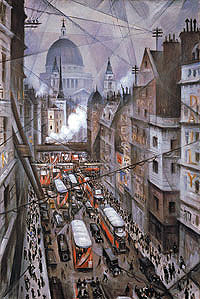
Paintings, prints and drawings
The collection covers a vast range of London-related subject matter from the 16th Century to the present day. We hold work by major artists as well as a wealth of images that reveal the topographical, social and artistic life of London.
London's architecture and streetlife
Including works by Wenceslaus Hollar, Paul Sandby, John Collet, Samuel Scott, Canaletto, William Marlow, Thomas Hosmer Shepherd, John O’Connor, David Roberts, William Powell Frith, George Elgar Hicks, Walter Greaves.
Prospects and panoramas
Including one of the earliest oil paintings of the City; London from Southwark (c.1630), Robert Barker’s London from the roof of the Albion Mills (1792) and the Rhinebeck Panorama (c.1806).
London events
Celebrations, disasters, riots and incidents from London’s history, including an important group of views of the Great Fire and a significant collection of World War II images, including works by David Bomberg, John Piper, Henry Moore, Graham Sutherland, Rose Henriques and Joseph Bato.
Satirical prints and drawings
Including a large group of 18th Century satirical prints and an important collection of watercolours by Thomas Rowlandson and Robert Dighton.
Portraits
Images of London personalities from Oliver Cromwell to Sylvia Pankhurst.
20th Century and contemporary art
Includes works by Camden Town artists Spencer Gore and Charles Ginner; paintings by C.R.W. Nevinson; recent work by Jock McFadyen, Mark Cazalet, Oliver Bevan, David Hepher, Adam Dant and an archive of drawings and notebooks by the illustrator Grace Golden.

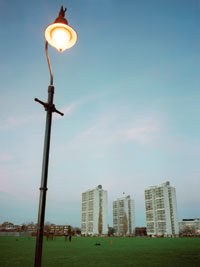
Photographs
The photographs collection is a key resource for the visual history of London during the second half of the 19th and 20th centuries.
It includes work by both professional and amateur photographers and covers most aspects of London life. It contains some topographical and architectural images but the main emphasis is on social documentary.
Notable bodies of work include:
- Early topographical views of London by Roger Fenton, c.1857
- Construction of the Metropolitan District Railway by Henry Flather, 1860s
- London street life by John Thomson, c.1876
- Historic London buildings by Alfred & John Bool and Henry Dixon, 1870s & 1880s
- Poverty in the East End by John Galt, early 1900s
- Impressionist views of London by Alvin Langdon Coburn, early 1900s
- Suffragettes by Christina Broom, early 1900s
- Street and river scenes by George Davison Reid, c.1930
- East End homes by Humphrey Spender, early 1930s
- London street life in the 1930s by Margaret Monck, Wolfgang Suschitzky and Cyril Arapoff
- Underground shelters during the Blitz by Bill Brandt, 1940
- Bomb damage to the City of London during the Blitz by Arthur Cross and Fred Tibbs, 1940-41
- London street life in the 1950s, 1960s and 1970s, including work by Nigel Henderson, Roger Mayne, Paul Styles, B J Green, Cory Bevington, Jerome Liebling, Lutz Dill, Jim Rice and Paul Trevor
- Topographical views of London by Edwin Smith, 1960s
- Contemporary work by many photographers including Yoke Matze, Anna Fox, Alan Delaney, Paul Barkshire, Tim Daly, Chris Dorley-Brown, Tom Evans, John R. J. Taylor, Ed Barber, Magda Segal, Paul Baldesare, Dave Trainer, Paulo Catrica, Ronen Numa, Angus Boulton, Janet Hall, Dave Young, Michael Donald, Jason Wilde, John Davies, David Turner Tom Hunter and Mike Seaborne
The collection also includes two very large groups of photographs:
The Henry Grant Collection
The entire photographic archive of this freelance photographer who worked for newspapers and magazines concerned with social or educational issues over the period c.1950-80. This includes the 6x6 cm negatives, contact sheets, prints, documentation and associated paperwork. Containing around 80,000 b&w (no colour) images, this collection covers a huge range of subjects and is worth investigating for almost any aspect of life in post-war London. The Museum also owns the copyright in these images.
The Bassano Collection
The Bassano Collection consists of over 3,000 half -plate glass negatives of fashion advertisements produced by the Bassano and Vandyk studio between 1913 and 1940. They include advertisements for men's, women's and children's clothing and accessories, including knitwear, sportswear, fur fashions and underwear, and for jewellery and hair styles. Many relate to high profile London shops such as Selfridges, Harrods, Burberrys, Swan & Edgar and Cartier.

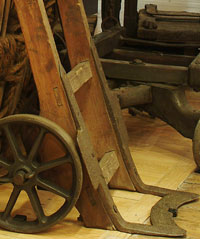
Port and river collection
The port and river collection contains material from London’s docks, the river Thames and riverside industries. It is particularly strong in artefacts relating to port and river trades, boats, cargo handling, conservancy and navigation.
The Port of London Authority (PLA) collection was transferred to the Museum of London in 1975. It contains historic items that were collected by the East and West India Dock Company in the 19th century, especially commodity samples from all over the world.
The PLA material includes cargo handling equipment and dock trade tools. The bulk of the collection was acquired between 1979 and 1990, the period that saw the closure of the West India and Millwall Docks and the Royal Group of Docks and the beginning of the redevelopment of Docklands.
Vessels
Traditional Thames craft include a PLA watermen’s skiff (c.1930), the West India Dock skiff, Thames (1934), Hammerton’s Ferry skiff, the Pax (c.1900), Wey Barge Perseverance IV (1935), the launch tug Varlet (1937) and the ex-steam tug Knocker White (1924).
Cargo handling equipment
Objects reflect every aspect of the loading and unloading, the handling, sampling and processing of commodities in the port. They include winches and cranes, hand trucks and carts and many varieties of dock hook. Weighing equipment ranges in size from the large beam scales to desktop scales for weighing individual cigars.
Navigation, moorings and salvage
Material in this category includes ship’s compasses, sextants, marker and mooring buoys, ship and tug pennants, anchors, diving and salvage gear, including the traditional helmet, canvas suit, weighted boots and hand-powered fresh-air pumps.
Models
A range of Thames river craft, sailing ships and steamer models form part of the collection. Important models include the Lord Mayor of London’s barge by Searle & Co., a City of London Harbour Master’s skiff, Brewers, Chester, and Galley Quay in the City of London, c.1850 and two large 1870s half-models of HMS Northumberland built at the Millwall Ironworks.
Port and related trades
This part of the collection is very comprehensive. It includes material relating to barge and boat building, cooper’s and carpenter’s tools, chain testing machinery, engineering pattern-making tools with a large selection wooden patterns, paint and colour making equipment, paper and board making, rice milling, rigger’s and sail-makers’ equipment, shipwright’s tools and ship-chandler’s and tinsmith’s equipment.
Specialist trades and equipment
Objects relate to a wide range port and river professions including customs and excise officers, dock police, trade union officials, surveyor’s, railway workers and dock administrative staff. There is a very large group of signs and notices that relate to port and river work. Items from London’s 18th and 19th century Greenland and South Sea Whale Fisheries include a try-pot, harpoons, scrimshaw and whale bone.

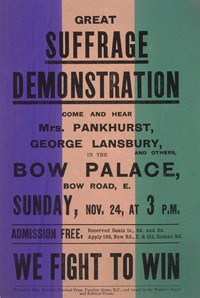
Social and working history
The bulk of the Museum's three-dimensional object collections are contained in the Social and working history collection. A great variety of subjects are represented and most objects have good London contexts and supporting information.
Social history
General domestic material: good holdings of toys, including the Ernest King collection of Edwardian penny toys; vehicles; food packaging; architectural and building fragments, street furniture, shop fronts and interior fittings from a variety of London buildings.
Working history
The Museum's collection of tools and workshop material is one of the largest in the UK. Many trades are represented including clock and watchmaking, wheelwrights, glass-making, silk-weaving, braid-making, shoe-making and repairing, silversmiths, button-making, printing, engraving, ballet shoe-making. Many of the workshop groups include equipment, tools, fittings and archive material. There are representative holdings of general office and London markets equipment and material from London's entertainment industries.
Printed ephemera and archives
An internationally important holding of suffragette material, based on the archive of the Women's Social and Political Union; business archives from the Whitefriars Glassworks; papers related to Imre Kiralfy, Kibbo Kift, the Festival of Britain, London theatres; 19th-century valentines and tinsel prints; general material on London subjects include a good collection of trade cards and material on pleasure gardens, fashion, eating and drinking, shops and shopping (including department stores), local and national government and royalty.
Telecommunication is a particularly strong area of the collection with a range of telephone kiosks, telephones, telegraphic instruments and exchange equipment.